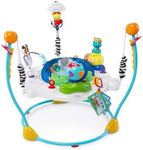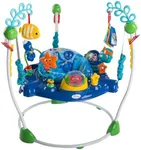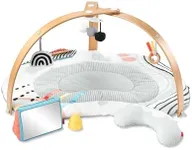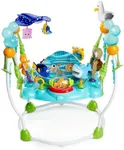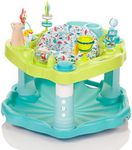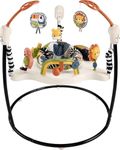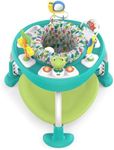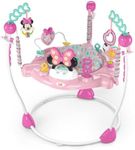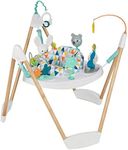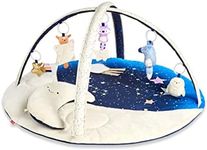Buying Guide for the Best Baby Activity Centers
Choosing a baby activity center can be a fun but sometimes overwhelming process, given the variety of options available. The main goal is to find a product that is safe, engaging, and developmentally appropriate for your child. When shopping, it's important to consider your baby's age, interests, and developmental stage, as well as the space you have at home. Always prioritize safety and look for features that will keep your baby entertained and help them learn new skills.Age and Weight RangeThe age and weight range tells you for which babies the activity center is designed. This is important because using a product outside its recommended range can be unsafe or uncomfortable for your child. Activity centers are usually divided into those for younger babies (around 4-6 months) who can hold their heads up, and those for older babies who are more mobile. Always check the manufacturer's guidelines and choose one that matches your baby's current stage to ensure both safety and enjoyment.
Safety FeaturesSafety features include things like sturdy construction, non-toxic materials, and secure harnesses or seats. These are crucial because babies are naturally curious and will tug, pull, and chew on everything. Look for activity centers with a wide, stable base to prevent tipping, smooth edges to avoid injuries, and materials that are free from harmful chemicals. If your baby is very active or you have other children or pets at home, prioritize models with extra stability and safety certifications.
AdjustabilityAdjustability refers to how much you can change the height or configuration of the activity center as your baby grows. This is important because babies develop quickly, and an adjustable center can be used for a longer period. Some centers have multiple height settings or can convert from a stationary seat to a play table. If you want a product that grows with your child, look for one with several adjustable features. If you only need it for a short time, a simpler model may be sufficient.
Types of Activities and ToysThe types of activities and toys included determine how engaging and educational the activity center will be. These can range from simple rattles and mirrors to more complex features like music, lights, and interactive elements. Think about what will interest your baby and help them develop new skills, such as reaching, grasping, or standing. If your baby is easily bored, choose a center with a variety of activities. If you prefer a quieter environment, look for centers with fewer electronic features.
Portability and StoragePortability and storage refer to how easy it is to move or put away the activity center. This matters if you have limited space or want to use the center in different rooms or even take it to grandparents' houses. Some activity centers fold flat or come apart for easy storage, while others are bulkier and meant to stay in one place. If space is tight or you travel often, prioritize lightweight and foldable designs.
Ease of CleaningEase of cleaning is about how simple it is to keep the activity center hygienic. Babies are messy, so look for centers with removable, machine-washable seat covers and wipeable surfaces. If your baby has allergies or sensitive skin, this becomes even more important. Choose a model that you can clean quickly and thoroughly to keep your baby healthy and comfortable.

